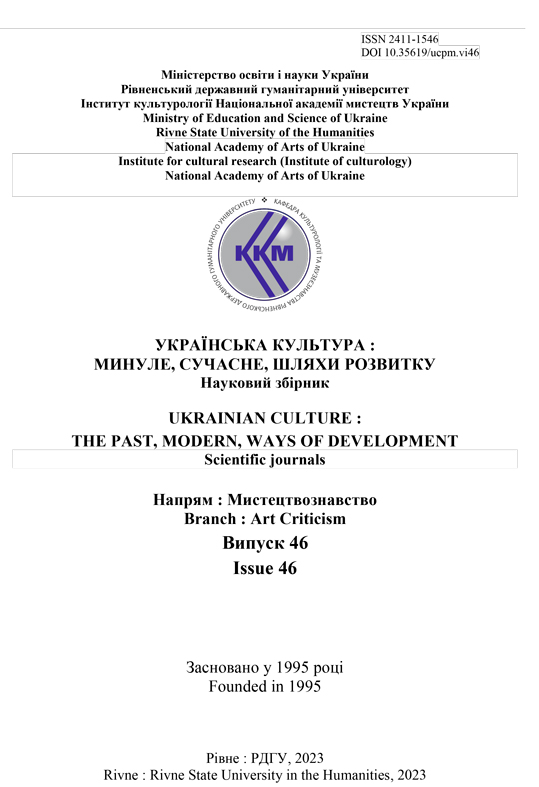DETERMINANTS OF THE INFLUENCE OF OPTICAL RADIATION OF VISUAL RANGE ON THE LIGHT ENVIRONMENT IN THE CONTEXT OF ITS DESIGN
DOI:
https://doi.org/10.35619/ucpmk.v46i.706Keywords:
light environment design; optical radiation of visual range; determinant of visual perception of color and shape; determinant of natural life cycles.Abstract
The article covers the issue of choosing appropriate ways to control the lighting system by identifying the main determinants of influencing it, in the context of the design of the lighting environment. The study identifies the following levels of optical radiation of the visual range influence on the environment: the determinant of visual perception of color and shape; the determinant of living beings‘ natural life cycles.
It is established that for a human the determinant of visual perception of color and shape is expressed in: the level of visual productivity; levels and degrees of concentration; speed of perception and processing of visual information; conscious aesthetic pleasure from the perception of visual information. The determinant of the natural life cycles is primarily expressed in: ensuring the cycle of sleep / alertness; ensuring circadian regulation of physiological processes; psychological impact on emotions, mood, and cheer.
It is discovered that each of the outlined levels of influence of visual range optical radiation on the environment, has its priority way to perception by a person. The determinant of visual perception of color and shape is realized mainly through the awareness of visual information, partially affecting the unconscious processes in the formation of an individual‘s emotional response. The determinant of natural life cycles, under normal conditions, is implemented beyond consciousness, and in this context, information about the environment is processed subconsciously. For lighting equipment design, this circumstance determines the choice of ways to control the lighting system, depending on the priority level of its impact on the environment.
As a result of the study, it was found that lighting focused on providing a visual function can be controlled not only automatically but also personally by the user, depending on their needs. For lighting systems of this type, an important feasibility criterion is the provision of methods for individual control of light indicators or additional adjustment of light
parameters. However, lighting focused on supporting natural human cycles and unconscious bodily reactions can be controlled only automatically by a detailed scheme, which will achieve the necessary background effects.




